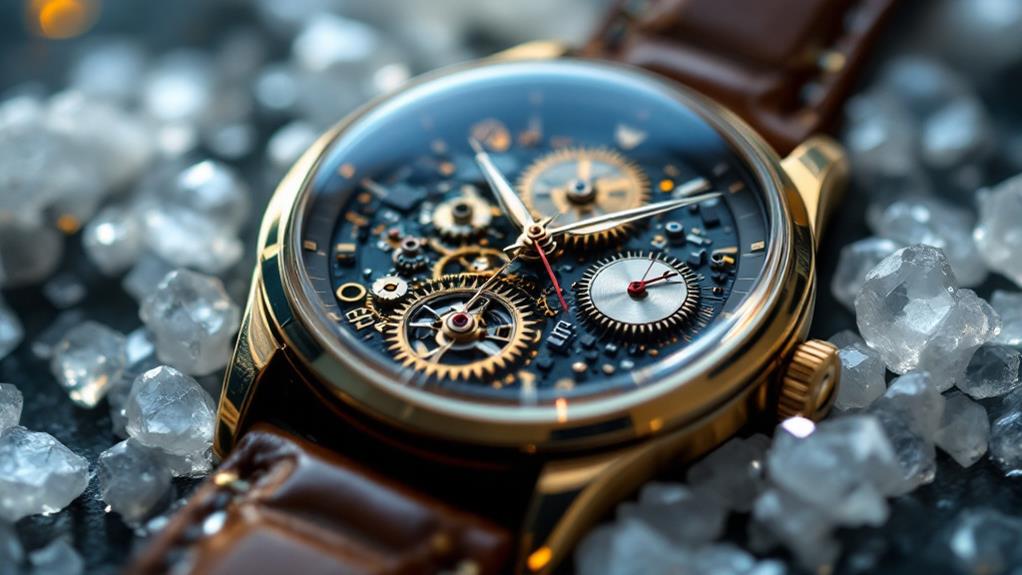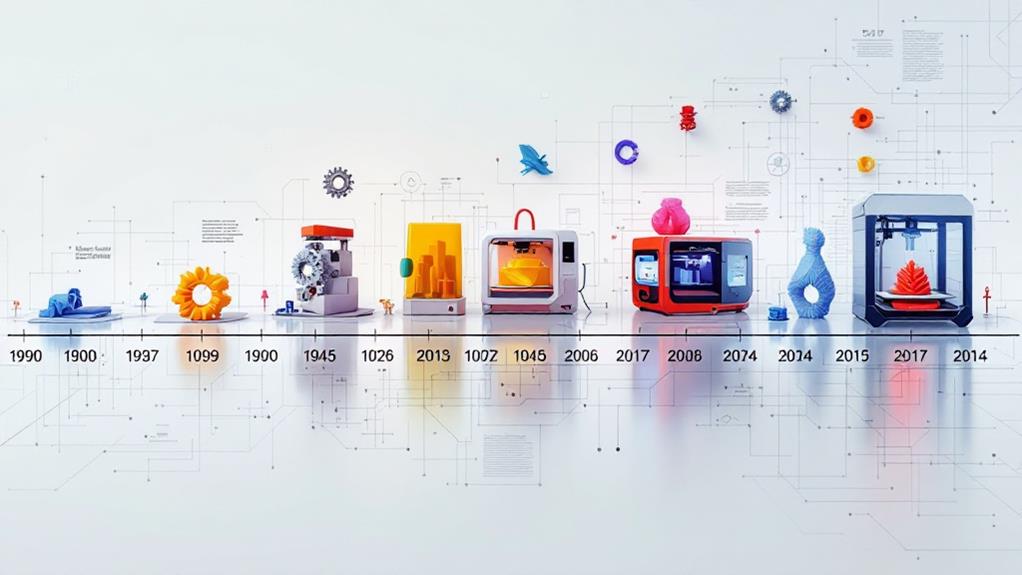Who Invented the Modern Watch? The Evolution of Timekeeping

You might not know it, but the modern watch as we recognize it has been shaped by centuries of evolution in timekeeping. Ancient civilizations relied on sundials and water clocks, paving the way for mechanical clocks in the Middle Ages that worked irrespective of sunlight. The 16th century introduced pocket watches, granting timekeeping a portable touch. By the 20th century, wristwatches transformed daily life, becoming practical during World War I. The quartz revolution in the 1960s dramatically improved accuracy and accessibility. Keep going, and you'll uncover the fascinating expedition behind today's timepieces.
Origins of Early Timekeeping
Timekeeping has fascinated humans since ancient times, and the origins of early timekeeping reveal a deep connection to nature. You'd find that your ancestors looked to the sky, observing the sun's movement to manage daily activities. This led to the creation of sundials. Sundial origins date back to ancient Egypt and Babylon, where large stones or pillars cast shadows on marked ground, allowing people to track time based on the sun's position. As you investigate this ancient tool, you realize they relied heavily on clear skies and daytime, limiting their use.
In regions where sunlight wasn't consistent, especially at night, you might have turned to water clocks. These ingenious devices, known as clepsydras, offered a reliable alternative. They work by measuring time through the regulated flow of water from one container to another. Cultures from Greece to China adopted and perfected water clocks, showcasing human ingenuity in overcoming natural limitations. As you probe into these early timekeeping methods, you see how they laid the foundation for more sophisticated timekeeping devices. Both sundials and water clocks demonstrate humanity's relentless drive to measure time, setting the stage for future technological advances.
Rise of Mechanical Clocks
Innovation marks the rise of mechanical clocks, a significant leap forward in humanity's quest to measure time more accurately. As you traverse through history, you'll notice how sundial advancements laid the groundwork for this transformation. Sundials, relying on the sun's position, provided the initial steps in understanding time, but their limitations were evident, especially during cloudy days or nighttime. The need for a reliable, all-weather timekeeping device became apparent, leading to the development of mechanical clocks.
Mechanical clocks transformed timekeeping with their intricate escapement mechanisms. These mechanisms controlled the release of energy at regular intervals, allowing for precise time measurement. Imagine a world where you could suddenly tell time consistently, regardless of the sun's presence. The escapement mechanisms were the heart of these clocks, converting the stored energy into controlled movement, like the ticking rhythm you're familiar with today.
The Birth of Pocket Watches

As the 16th century dawned, the world witnessed a revolutionary shift with the creation of pocket watches. These compact timepieces marked a significant departure from the bulky mechanical clocks of the past. Suddenly, timekeeping became personal and portable. You could easily carry your watch, making it a symbol of status and sophistication. Early pocket watch designs were intricate, reflecting the artistry and craftsmanship of the period. They often featured ornate engravings and were made from precious metals, emphasizing their luxury and exclusivity.
The historical significance of pocket watches can't be overstated. They not only democratized timekeeping but also influenced societal behaviors and time management. You found people becoming more punctual, as they could now carry the time with them. Pocket watches facilitated the synchronization of events and improved the efficiency of daily activities.
Moreover, these watches were more than just tools; they were heirlooms, passed down through generations, each carrying stories of the past. Their designs evolved over time, incorporating advancements in technology and changes in fashion. By understanding the birth of pocket watches, you gain insight into how they laid the groundwork for modern timekeeping devices.
Transition to Wristwatches
The late 19th and early 20th centuries witnessed a significant shift in personal timekeeping with the rise of wristwatches. Initially, wristwatches were mainly worn by women, seen more as a fashion statement than a practical tool. However, the winds of change began to blow during World War I. Soldiers found wristwatches far more convenient than pocket watches when on the battlefield. This practical need spurred wristwatch innovation, transforming them from mere accessories into vital tools.
As you explore this period, you'll uncover how wristwatches evolved in both utility and style. Manufacturers started focusing on creating durable, precise, and easy-to-read designs suitable for everyday use. The wristwatch became a symbol of modernity and sophistication, appealing to men and women alike. By the 1920s, wristwatches had firmly established themselves, leaving pocket watches in the past.
Wristwatches didn't just tell time; they made a statement. They became a reflection of one's personality and status. As you strap on a wristwatch today, you're not just keeping track of time—you're participating in a rich history of wristwatch innovation and fashion, deeply rooted in this significant change.
The Quartz Revolution

In the late 1960s, a game-changing development forever altered the landscape of timekeeping: the quartz movement. You might wonder why this was such a big deal. Before quartz technology, watches relied on mechanical movements with intricate gears and springs. These were impressive but could be inaccurate and required regular winding. Quartz watches, on the other hand, used a tiny piece of quartz crystal that vibrated consistently when an electric current passed through it. This innovation meant unprecedented accuracy and minimal maintenance, transforming how you kept time.
With quartz technology, the possibility of digital displays became a reality. Suddenly, you could glance at your wrist and see precise electronic numbers instead of hands on a dial. This opened the door to new designs and functions, like alarms and timers, which were not feasible with traditional mechanical watches. You had access to technology that was not only more reliable but also more affordable. This accessibility led to a massive shift in the watch industry, making accurate timekeeping available to everyone. The quartz transformation wasn't just about keeping time—it was about changing how you interacted with it.



